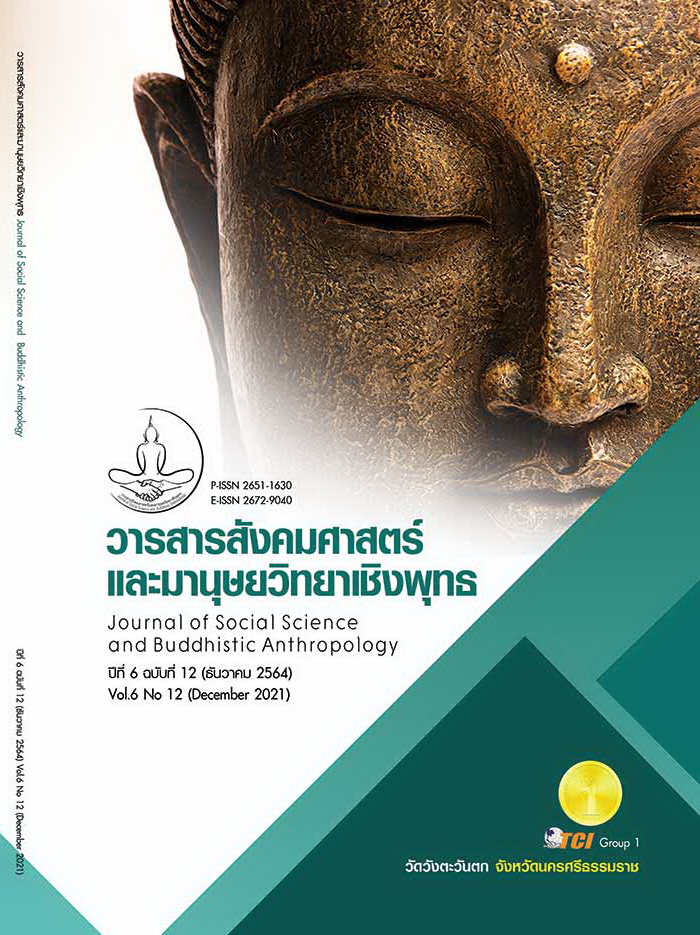THAI LANGUAGE LEARNING ACTIVITIES BY USING THE GRAFFITI MODEL ON READING COMPREHENSION ABILITY AND COOPERATIVE SKILLS OF UBONRATCHATHANI UNIVERSITY’S STUDENTS
Keywords:
Cooperative Skill, Thai Language Learning Activities, Graffiti Model Which Affects Reading Comprehension AbilityAbstract
The objectives of this research article were to compare 1) reading comprehension ability skills between a group learning by the graffiti model and a group learning by conventional instruction 2) cooperative skills between a group learning by the graffiti model and a group learning by conventional instruction.3) reading comprehension ability of the two groups of students when doing their pre-test and post-test in this experiment. 4) cooperative skills of the two groups of students when doing their pre-test and post-test in this experiment. The samples were of Ubon Ratchathani University students registered in the Thai Language for Communication course, the first semester of the academic year 2018. The samples were divided into two groups. There were 90 students in the experimental group, which learned by the graffiti model, and a controlled group of 85 students learned by conventional instructions. Results were concluded as follows:1) The controlled group had higher reading comprehension ability after the experiment than before the experiment at the .05 level of significance; 2) The controlled group had higher reading comprehension ability than students instructed by conventional instructions at the .05 level of significance; 3) The controlled group had higher cooperative skills after the experiment than before the experiment at the .05 level of significance and; 4) The controlled group had higher cooperative skills than students instructed by conventional instructions at the .05 level of significance.
References
ฉวีวรรณ คูหาภินันท์. (2542). การอ่านและการส่งเสริมการอ่าน. กรุงเทพมหานคร: บูรพาสาส์น.
บันลือ พฤกษะวัน. (2532). มิติใหม่ในการสอนอ่าน. กรุงเทพมหานคร: ไทยวัฒนาพานิช.
ประภาสินี ปิงใจ . (2555). ผลของการจัดกิจกรรมการเรียนรู้ภาษาไทยโดยใช้โมเดลกราฟฟิติที่มีต่อความสามารถในการอ่านเพื่อความเข้าใจและทักษะการร่วมมือของนักศึกษาชั้นมัธยมศึกษาปีที่ 2. ใน วิทยานิพนธ์ครุศาสตรมหาบัณฑิต สาขาการสอนภาษาไทย . จุฬาลงกรณ์มหาวิทยาลัย.
มณีรัตน์ สุกโชติรัตน์. (2548). อ่านเป็น: เรียนก่อน สอนเก่ง. กรุงเทพมหานคร : นานมีบุ๊คพับลิเคชั่น.
วัฒนาพร ระงับทุกข์. (2545). เทคนิคการและกิจกรรมการเรียนรู้ที่เน้นผู้เรียนเป็นสำคัญตามหลักสูตรการศึกษาขั้นพื้นฐาน พ.ศ. 2544. กรุงเทพมหานคร: กราฟฟิค.
วิจารณ์ พานิช. (2555). วิถีสร้างการเรียนรู้เพื่อศิษย์ในศตวรรษที่ 21. กรุงเทพมหานคร: มูลนิธิสดศรี-สฤษดิ์วงศ์.
วิชัย ตันสิริ. (2547). โฉมหน้าการศึกษาไทยในอนาคตแนวคิดสำคัญของการปฏิรูปในพระราชบัญญัติการศึกษา. (พิมพ์ครั้งที่ 4). กรุงเทพมหานคร: สำนักพิมพ์แห่งจุฬาลงกรณ์มหาวิทยาลัย.
ศรีวิไล พลมณี. (2545). ภาษาและการสอน (พิมพ์ครั้งที่ 4). เชียงใหม่: เคล็ดไทย.
Estes and other. (2011). Instruction: A models approach 6th ed. The United States of America: Pearson Education.
Johnson and other. (1984). Circles of learning cooperative in the classroom. The United States of America: ASCD.
Johnson, D. W. & Johnson, F. P. (1994). Joining together group theory and groupskills. Boston: Allyn and Bacon.
Slavin, R. E. (1995). Cooperative Learning : Theory, research and practices 2nd ed. Boston: Allyn and Bacon.
Downloads
Published
How to Cite
Issue
Section
License
Copyright (c) 2021 Journal of Social Science and Buddhistic Anthropology

This work is licensed under a Creative Commons Attribution-NonCommercial-NoDerivatives 4.0 International License.








